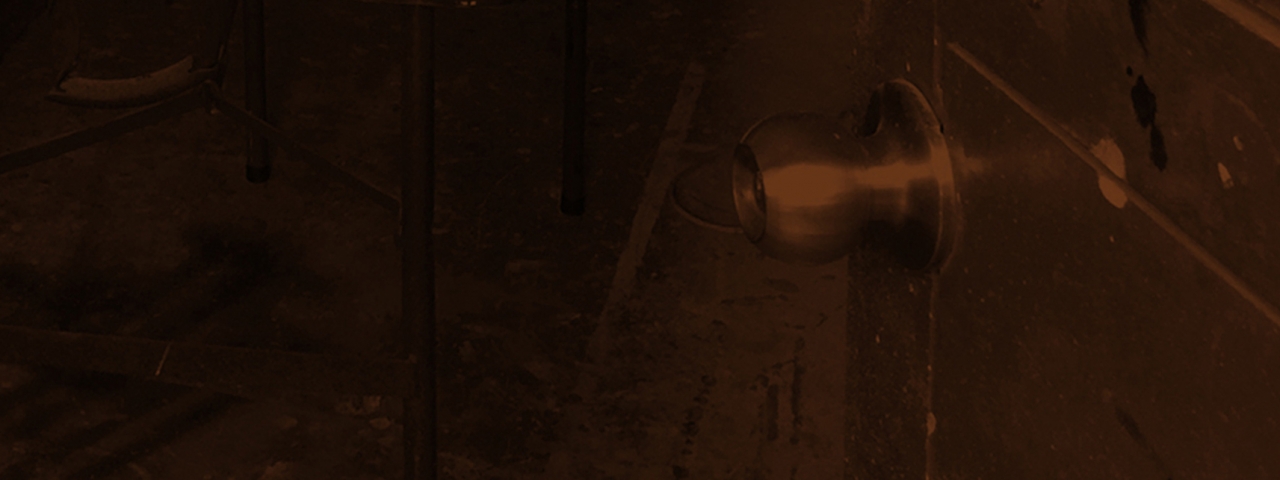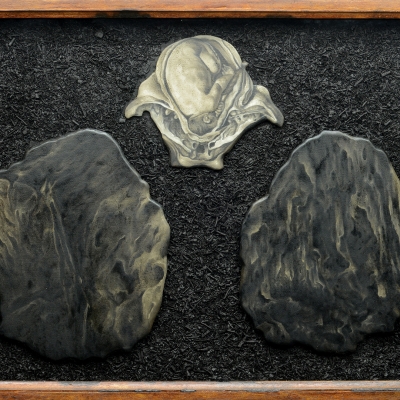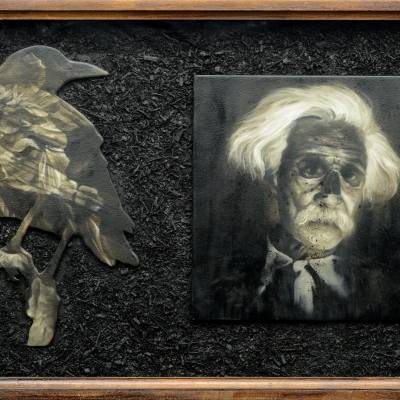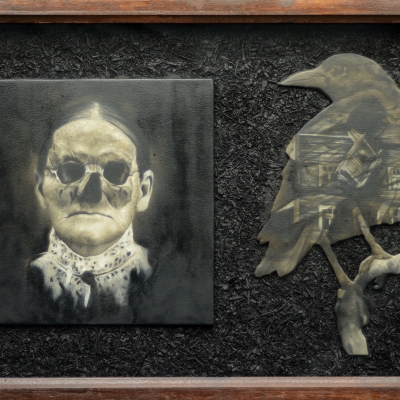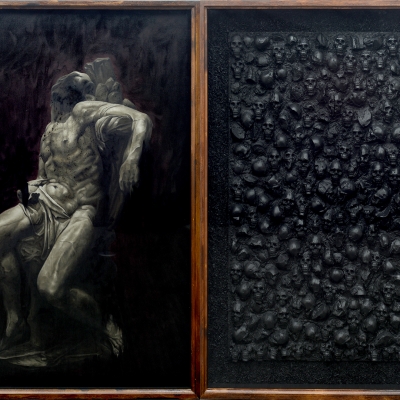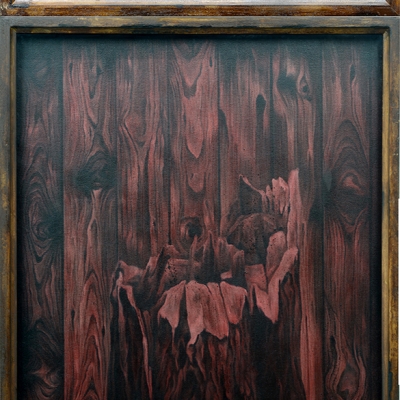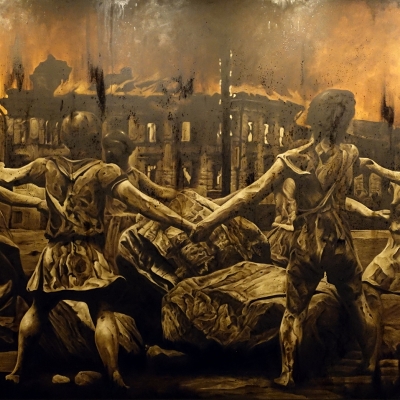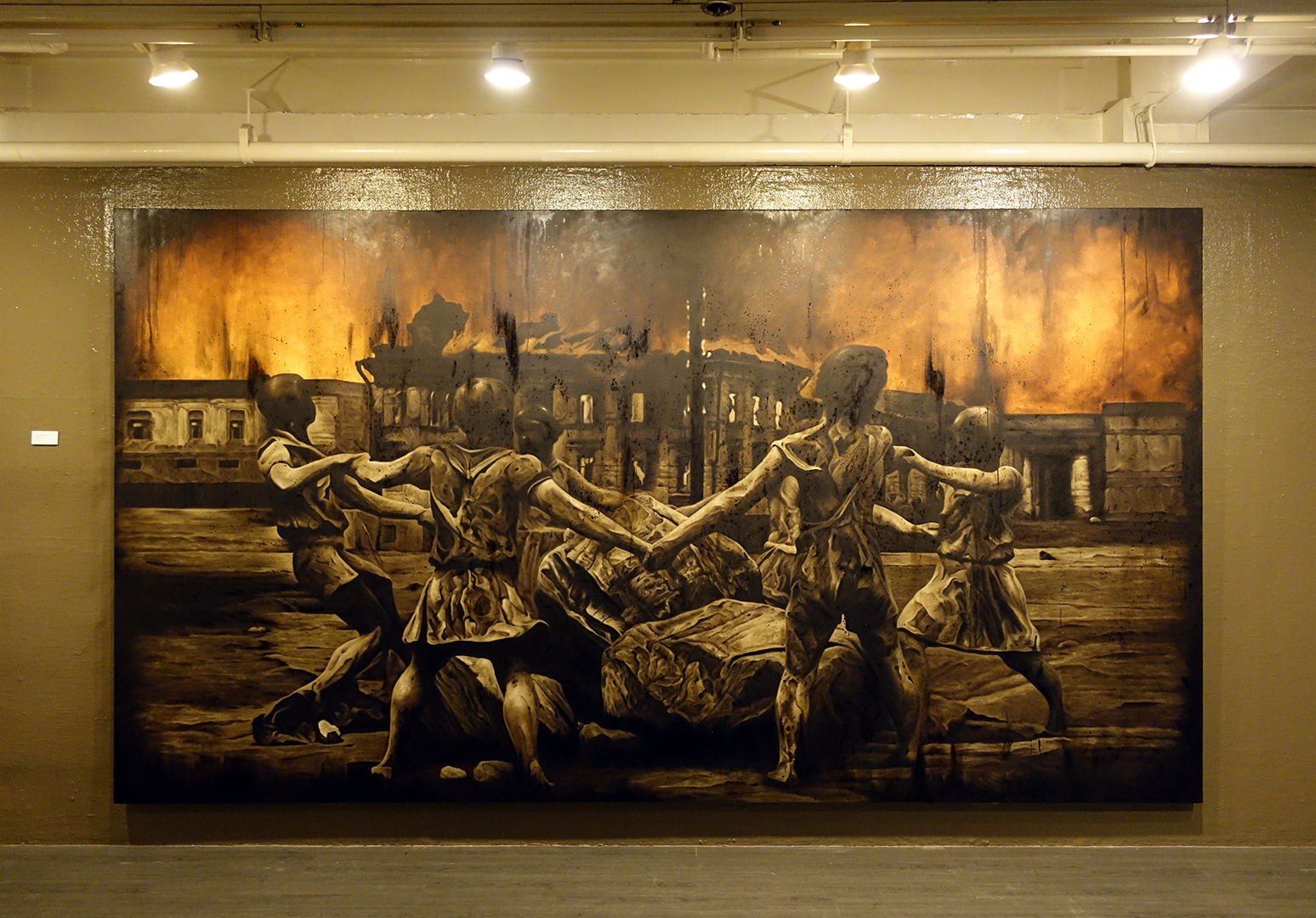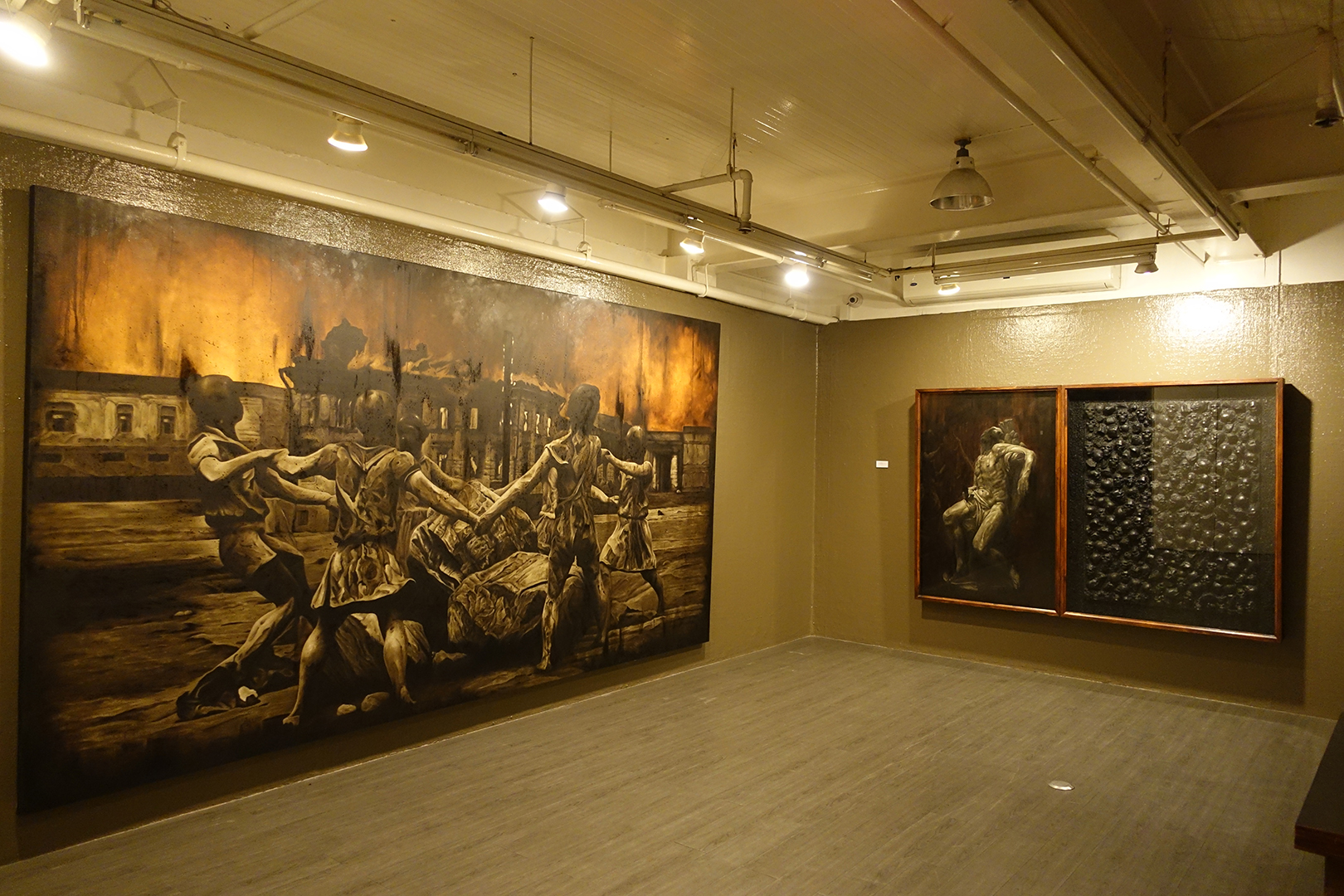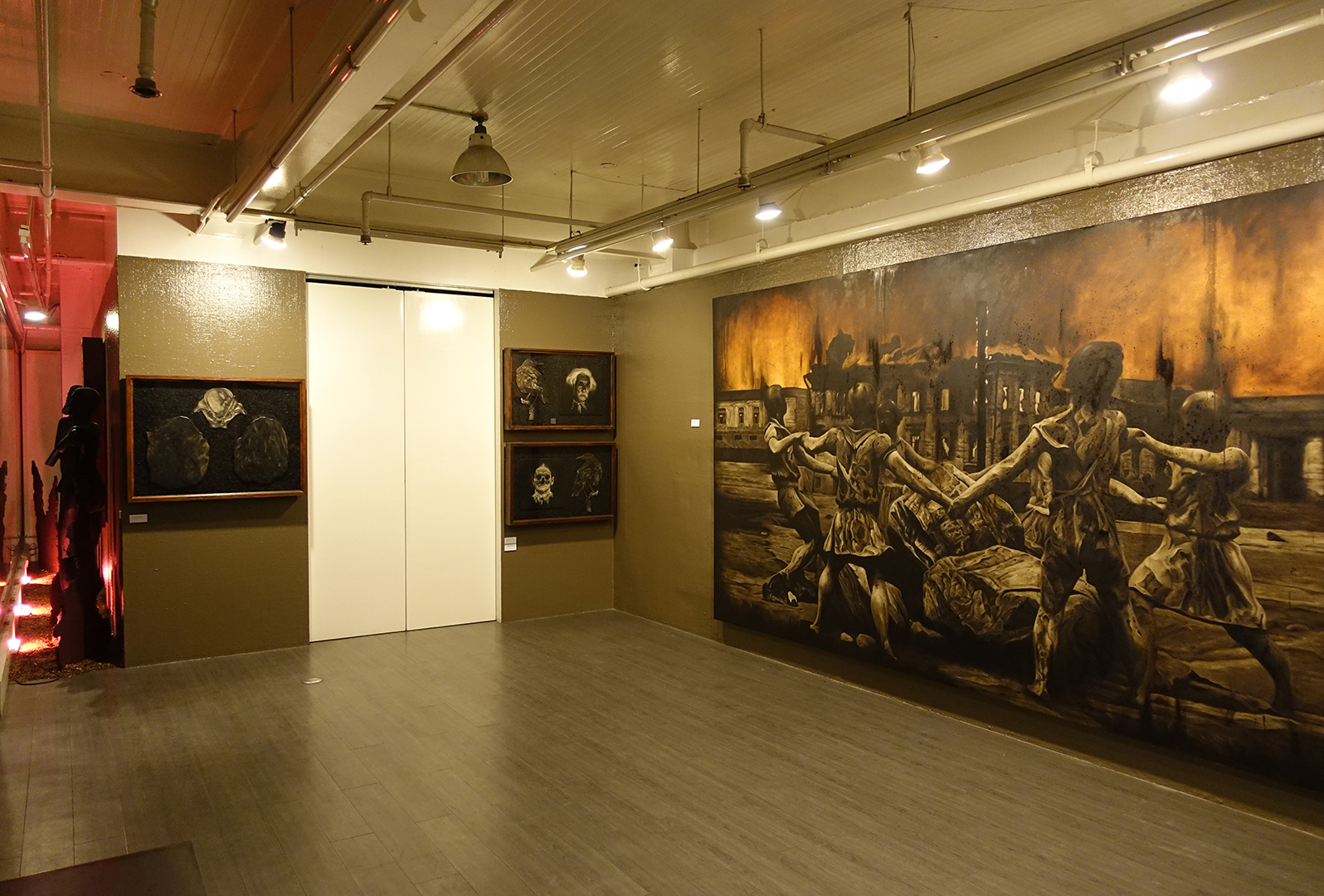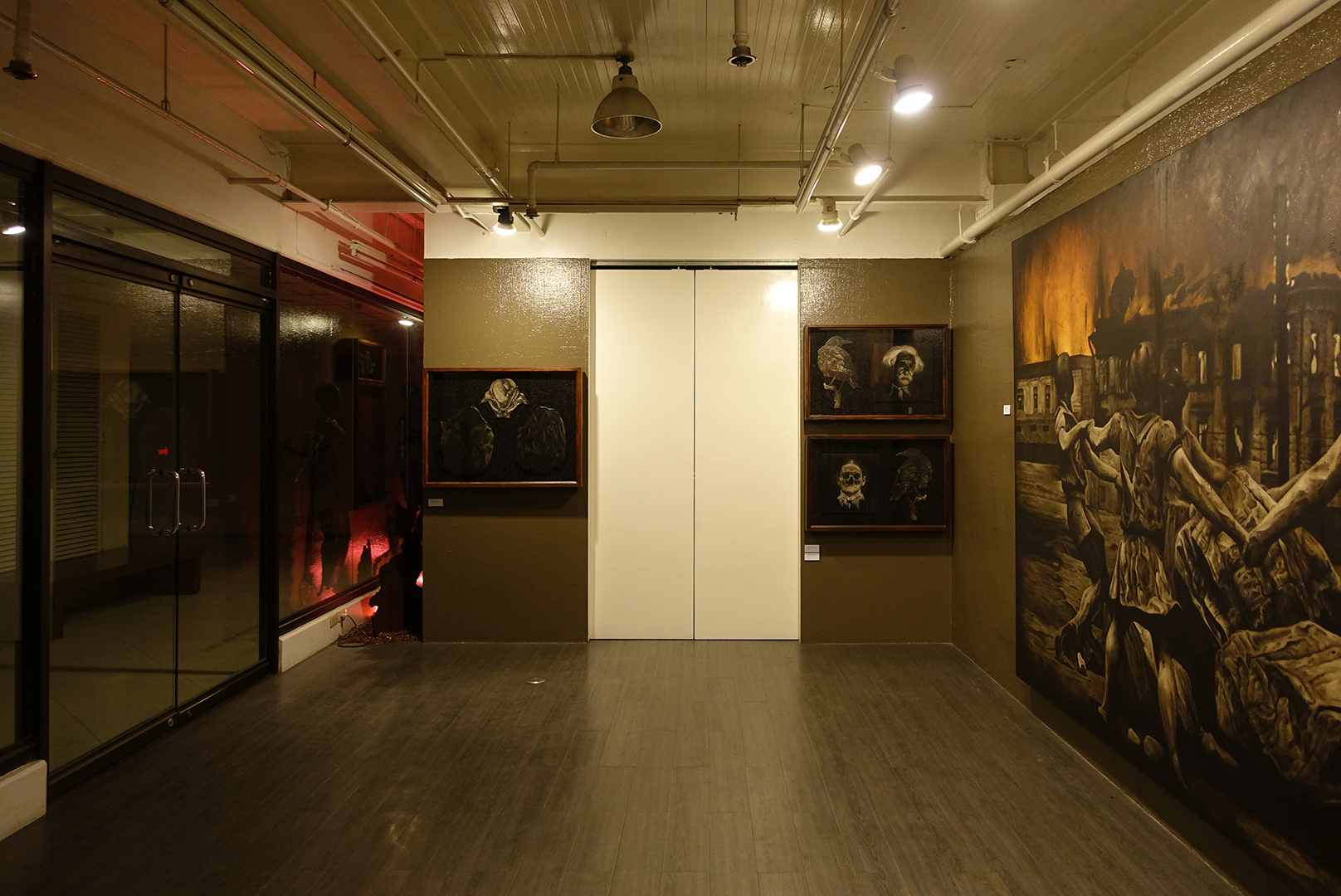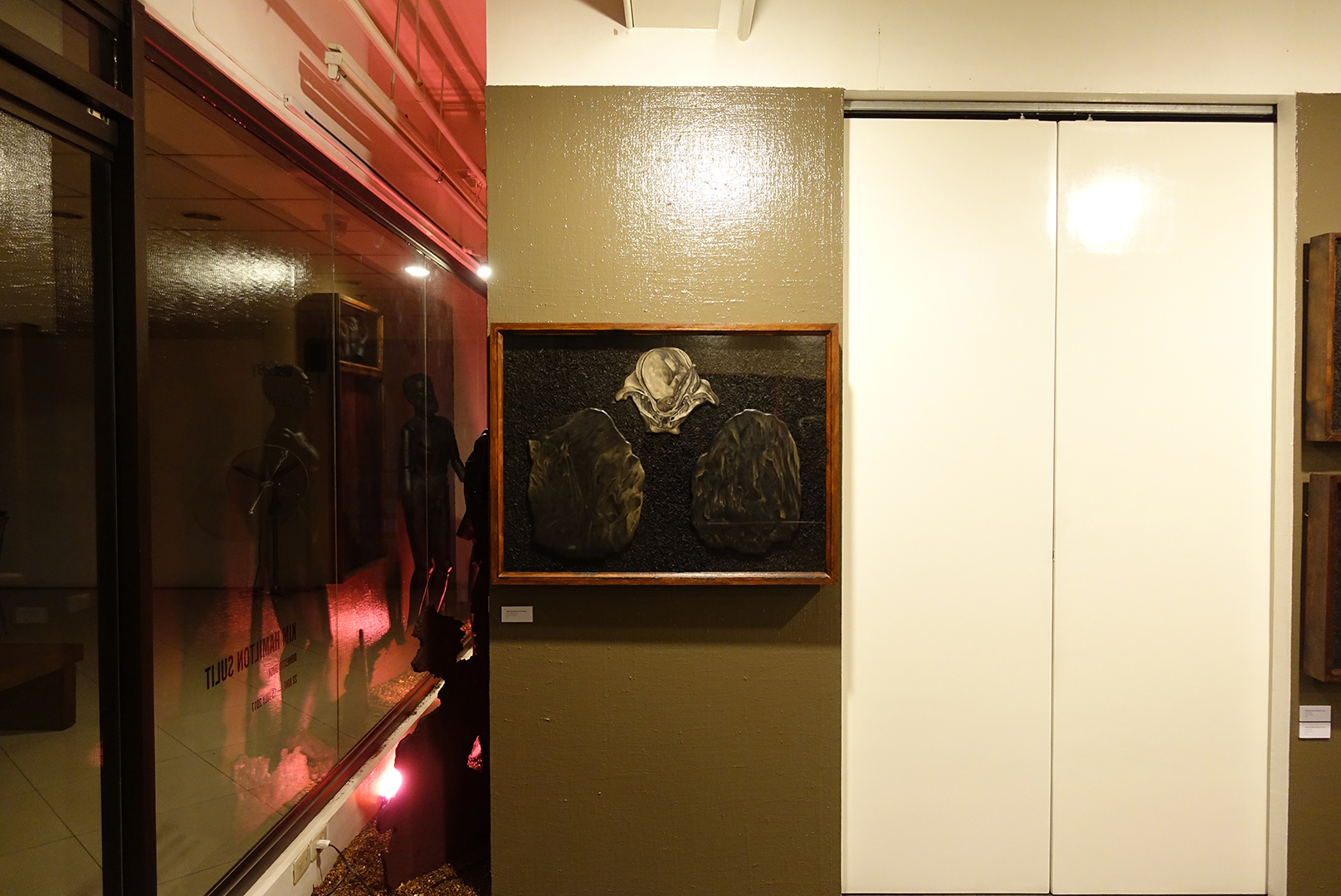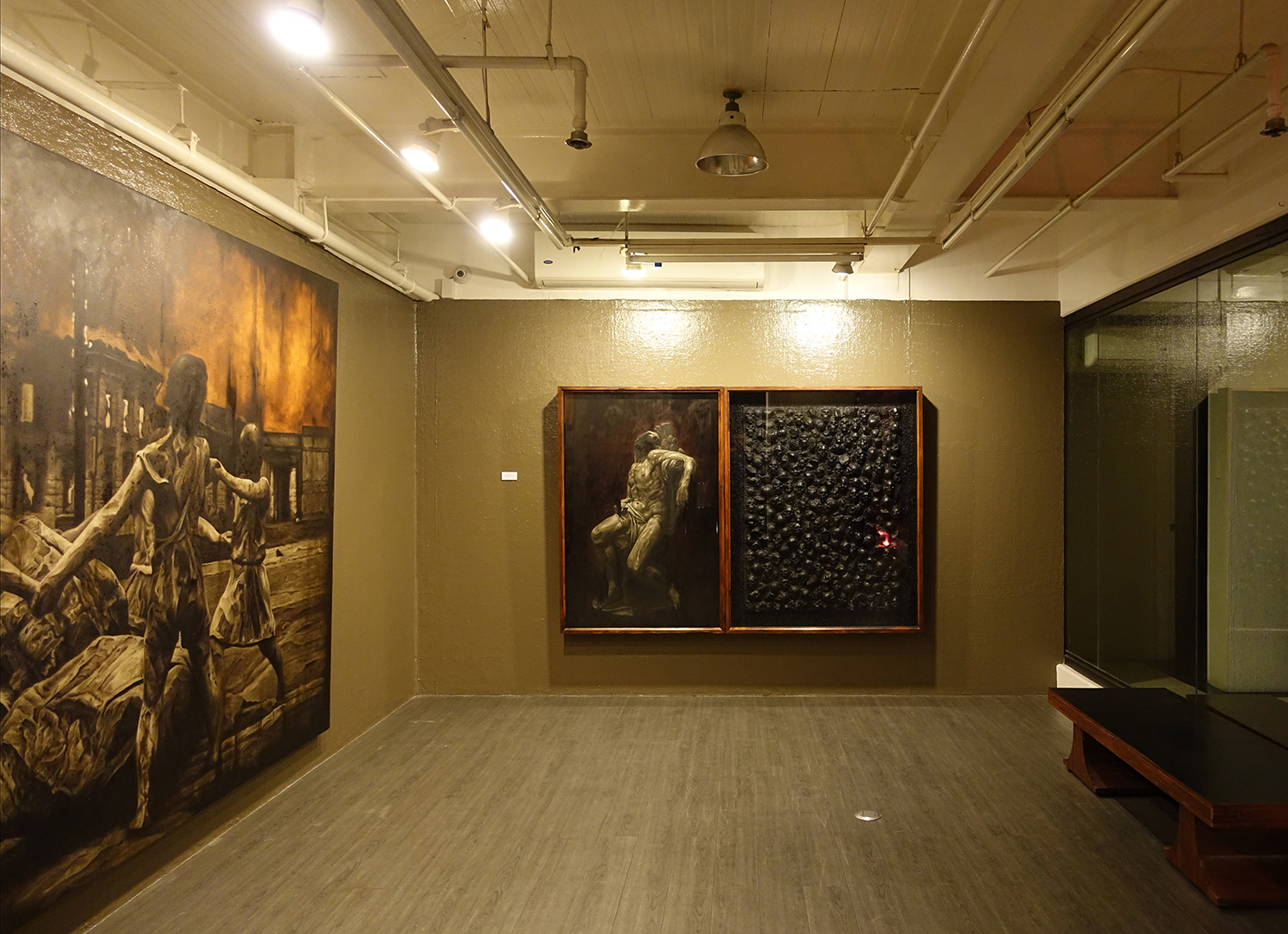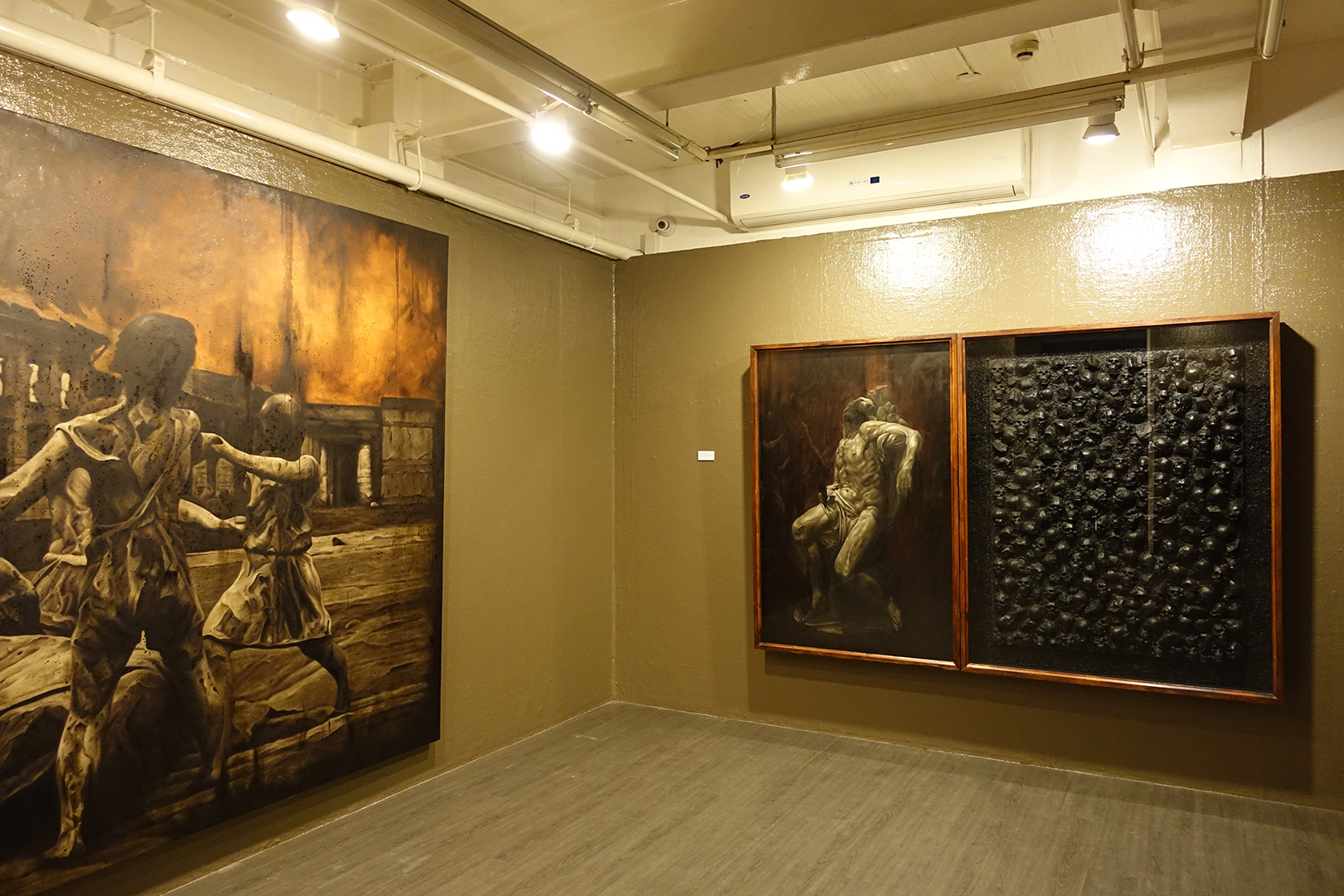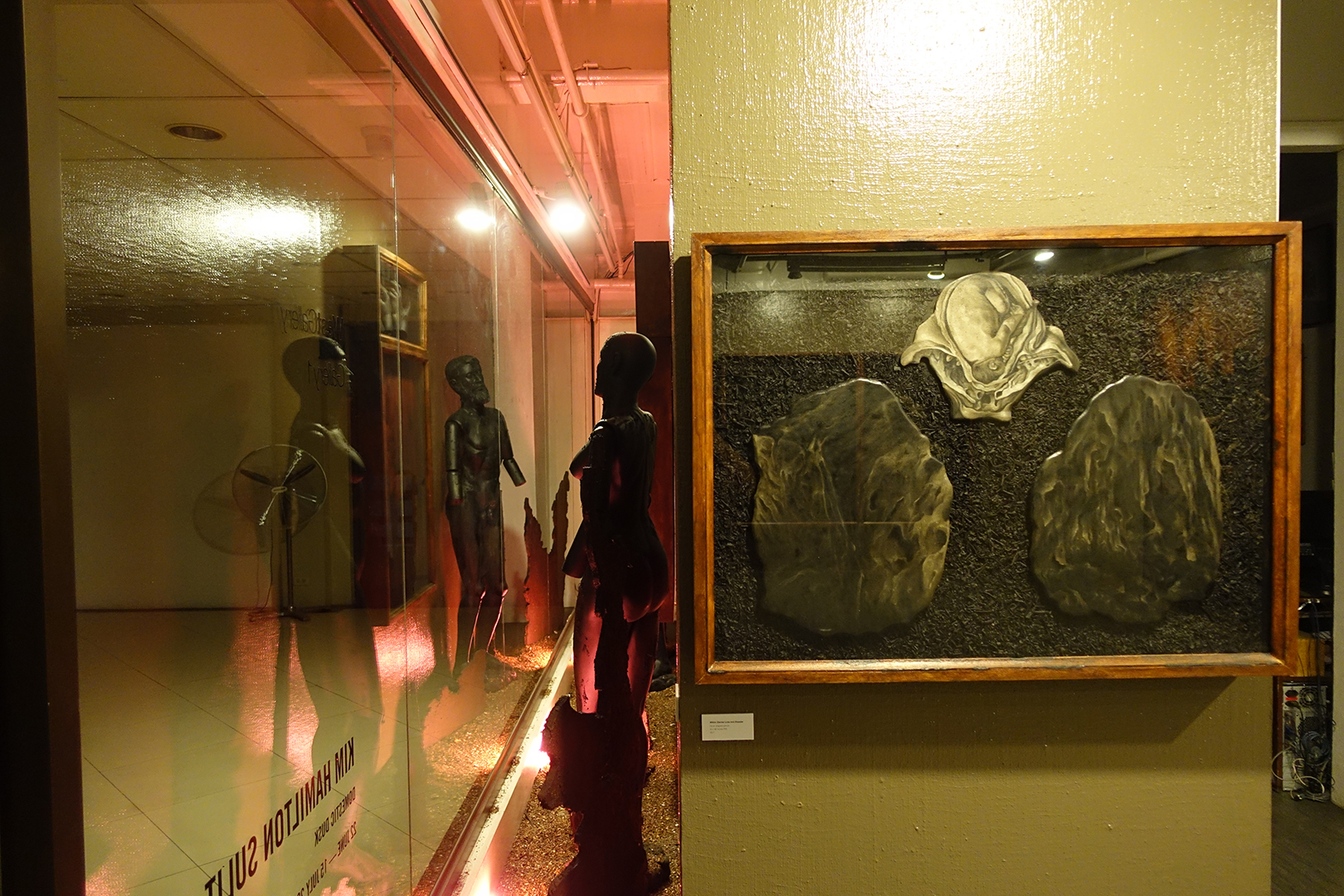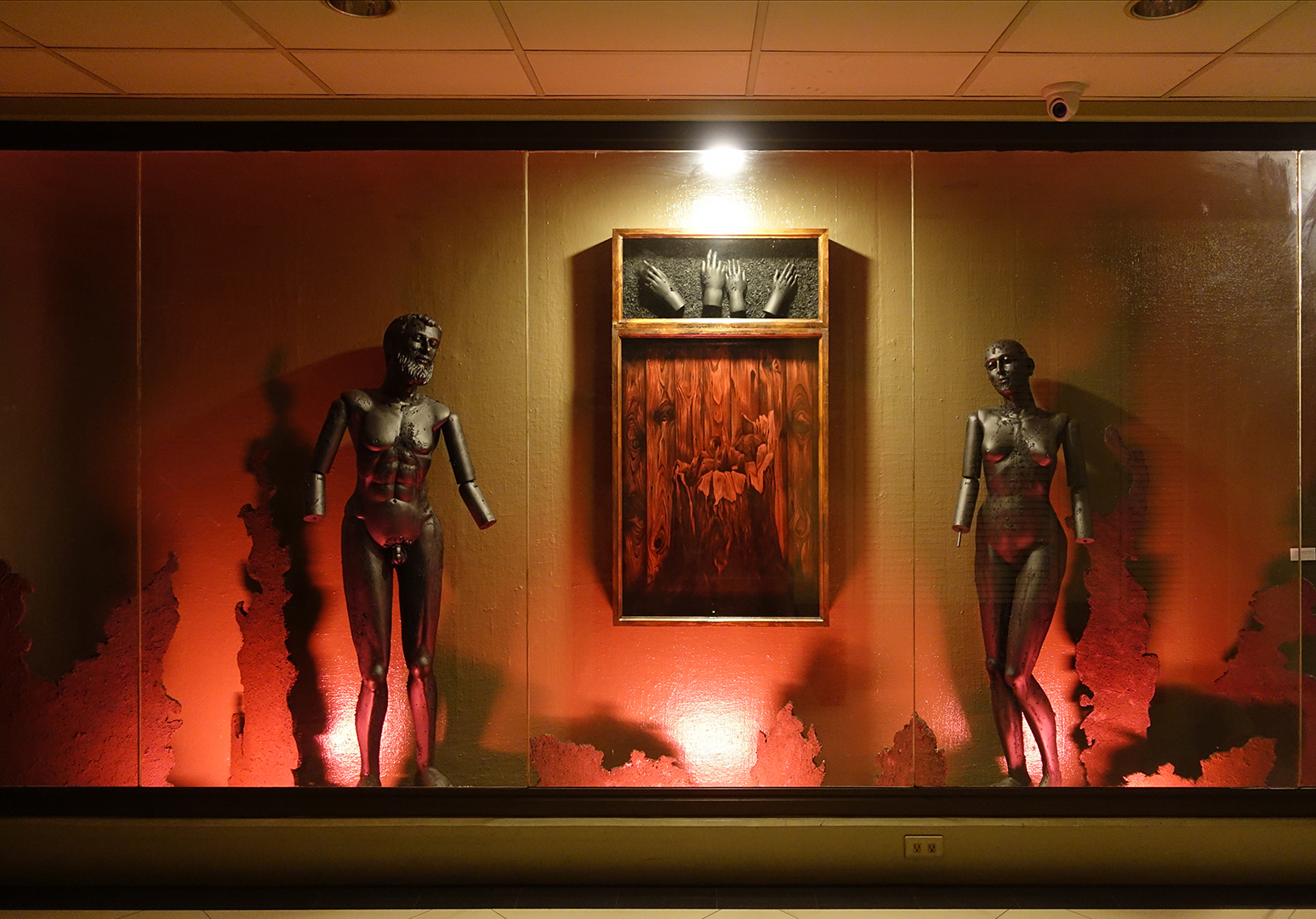Love and death are two things that Hamilton Sulit constantly explores in his works. In his latest show, the artist meditates on these as they are found in the smallest of spaces – the home. Domestic space includes the marital bed; one’s neighborhood and community; one’s country among countries. Meanwhile, the “dusk” that falls upon Sulit’s world refers to the “fear, violence, and misfortune” that slowly envelope one’s immediate surroundings, and then scatter.
In pieces such as They are always waiting, the artist reflects on himself as a thinker and conveyer of thoughts. Life, Loss, and Death are personified, inviting the artist to understand them not only as ideas and dark emotions but as subjects of art. The work utilizes art and literature’s famous depiction of Saint Sebastian being tied to a tree. For the artist, who considers this piece as a kind of self-portrait, the martyr’s immobility is necessary in welcoming pain, danger, or horror. The welcoming gives him pleasure.
Within eternal love and disaster is self-reflexive as always, recollecting the artist’s failure in his personal life as a potential husband and a father. Taking on the form of ovaries, the rocks suggest the cyclical nature of Eros-Thanatos as foundational to any relationship between the sexes. It is the same experience that Sulit draws from when creating Memento (a thousand days of wild love), in which he observes how love is something that will always languish. If the tree symbolizes all that is durable in love, then the severed hands stand for separation and letting go. The artist shares that the work was inspired by his watching a neighbor go through the agony of love, something he himself has experienced but now considers mere memory.
Here lies the irony of the show: the subject of Domestic Dusk is the intimacy of home, and yet the dominant perspective is that of an outsider, as if the artist were a mysterious stranger looking into the windows of houses. These houses are cold and uninhabitable, as suggested in Traces of uncertainty. The work comments on how warfare – which many nations including ours engage in today – not only ruins homes but produces orphans as well. In Domestic Dusk, there is no promise of warm hearth and light anywhere.
And as shown by the resigned expressions of the old man and woman in Nothing to give, nothing to lose, ancient wisdom cannot help a young person make sense of all of this unless he or she lives his or her own life. Perhaps the artist is not really a mysterious stranger but a prodigal son or daughter, returning to a bleak place (“The world is my home…”). A child leaves his parents; an artist discovers buried legends; both become witnesses to other lives. Home is always the end of a journey. When child and artist come home as one individual, alone, they realize that they have arrived, in Tagore’s words, at “the gateway of the simple.” And if choosing to stay or go becomes easy, then so does declaring:
“I am now content to see things as they are.
I have gained freedom myself; I shall allow freedom to others.
In my work will be my salvation.”
-Faye Cura

